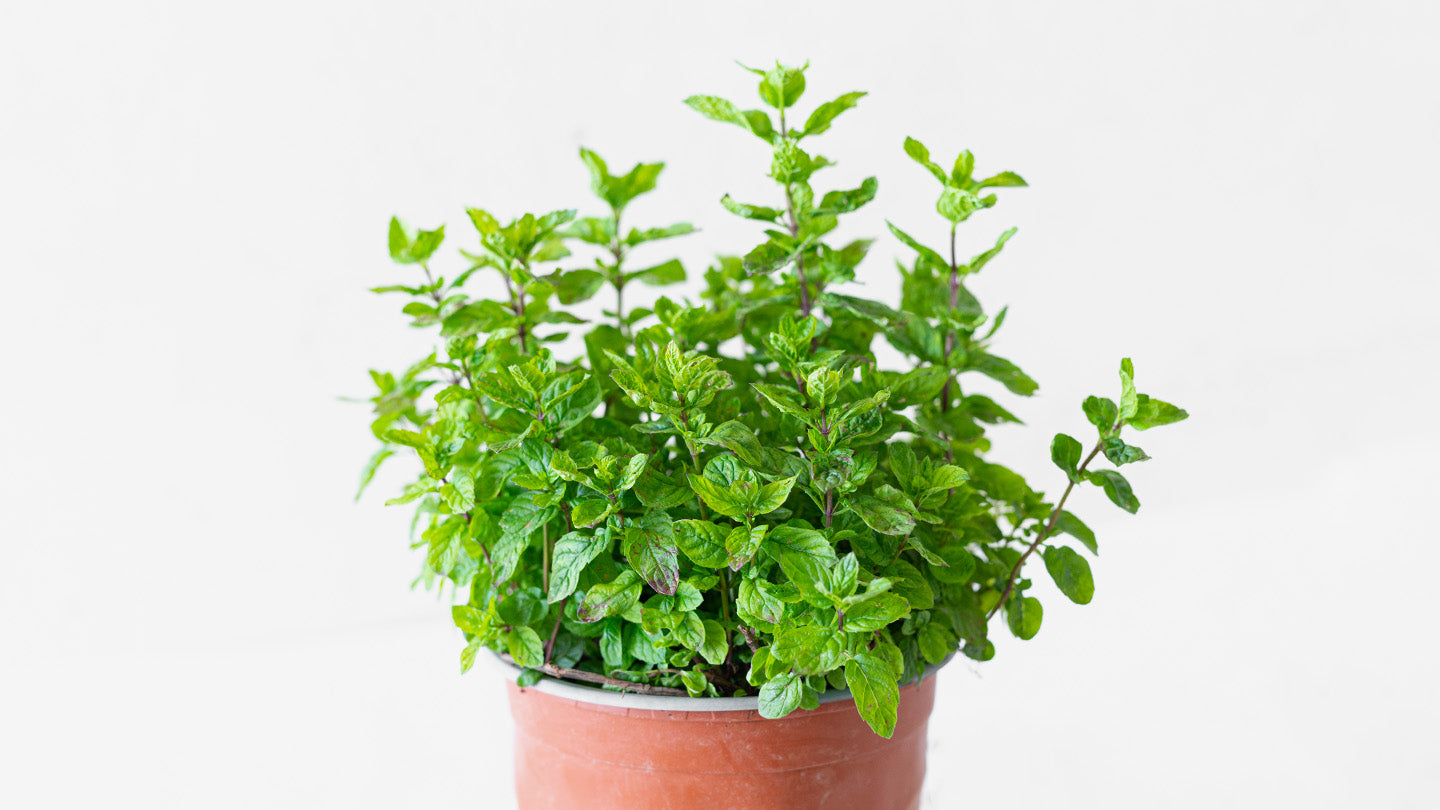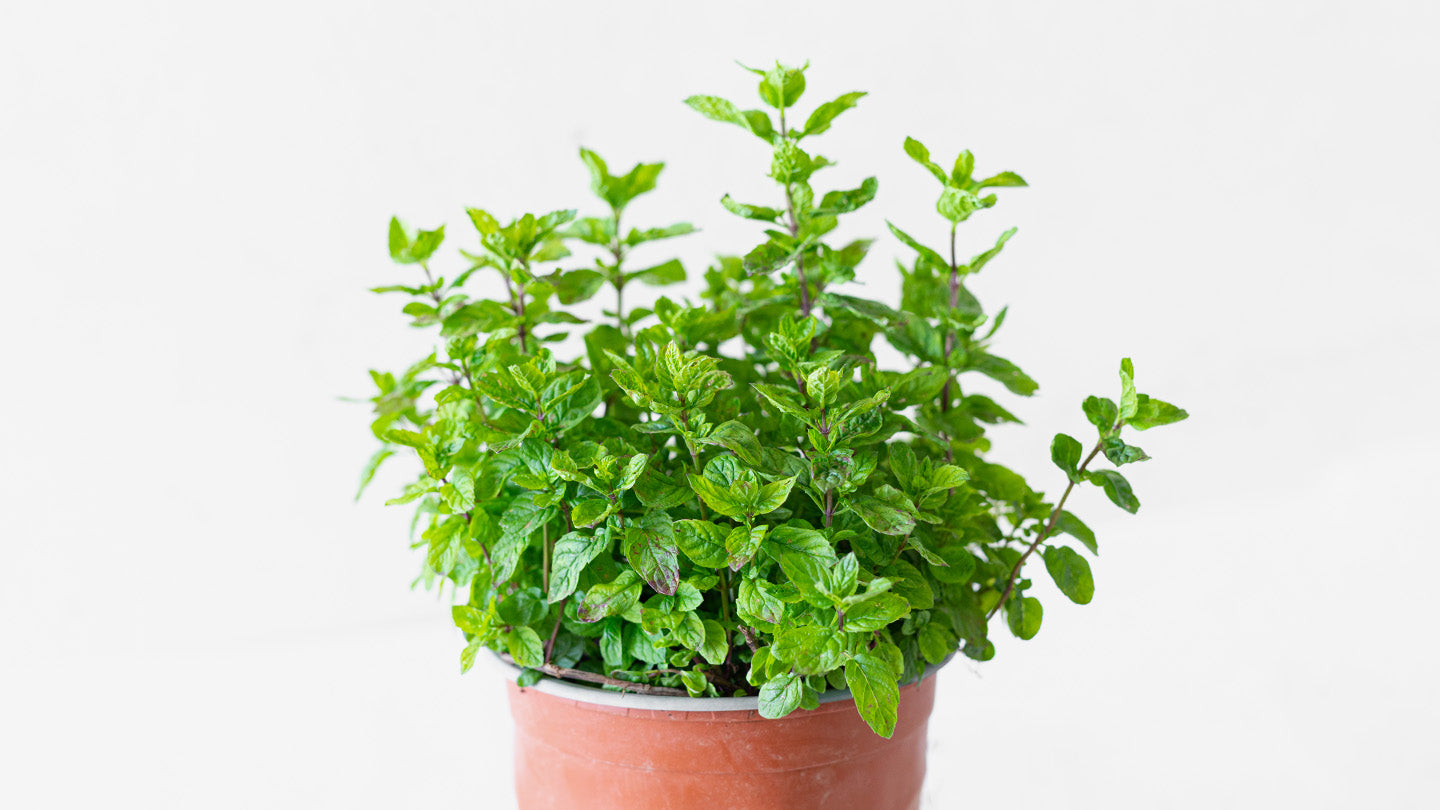cybloom
Mint
Regular price
€4,90 EUR
Regular price
€5,50 EUR
Sale price
€4,90 EUR
Unit price
per
Tax included.
Couldn't load pickup availability
Family: Lamiaceae
Origin: North America, Africa, Australia
The Size: 12–18 in. tall, 18–24 in. wide
Temperature & Humidity: Temperature tolerance depends on the species you are growing, but in general, mint plants are widely adaptable. For example, peppermint (Mentha piperita) is very cold hardy and is able to tolerate the cool temperatures in USDA hardiness zone 3. Spearmint (Mentha spicata) handles the heat well and can grow in USDA hardiness zone 11.
Lightning: Mint plants prefer part shade, though they will grow in full sun if you water them frequently. Still, it's best to protect them from strong afternoon sun. Mint also can survive in fairly shady conditions, though it might be leggy and not produce as many or as flavorful of leaves.
The Soil: Mint can adapt to most soil types, but it prefers a rich soil with a slightly acidic to neutral pH. Good soil drainage also is essential. Mint plants like water, but waterlogged soil can rot their roots.
The Soil: Mint can adapt to most soil types, but it prefers a rich soil with a slightly acidic to neutral pH. Good soil drainage also is essential. Mint plants like water, but waterlogged soil can rot their roots.
Watering: Water your mint during dry spells to keep the soil lightly moist. Maintaining lightly moist but not soggy soil is the ideal environment for mint. If the soil feels dry about an inch down, give your plant some water. If you notice the foliage of your mint wilting, that's typically a sign the plant needs more moisture. It's best to water your mint in the morning so it has plenty of moisture during the day as temperatures rise.
Fertilizer: Feed mint plants during the growing season (spring to fall) if you have nutrient-poor soil. If you already have rich garden soil, you likely won't have to give your mint any supplemental fertilizer. Container-grown plants and plants grown in nutrient-poor soil will benefit from feeding with a balanced, all-purpose fertilizer throughout the growing season, starting in spring when the plants emerge
Reproduction: You can start harvesting mint leaves once the plant has multiple stems that are six to eight inches long. This amount of growth should take about two months if you are growing plants from seed or less time if you buy nursery plants.
Transfer: Once your container of mint becomes root-bound and you see roots popping up above the soil, it's often simplest to take a cutting and start a new plant rather than repotting. An older plant won't have the best minty flavor.
Features of Care: Because mint is an aggressive spreader, keep it separated from your regular garden beds or the plants will consume nutrients and overgrow other plants in the bed. Growing mint in containers is recommended to keep it contained from spreading rampantly to other areas of your garden. If you plant mint in pathway crevices and between rocky places in high traffic areas, the mint will release its aromatic scent whenever the leaves are stepped on and crushed
Difficulties: Mint is usually not affected by pests or diseases. However, stressed plants can be bothered by common garden pests, including whiteflies, spider mites, aphids, and mealybugs. Mint plants can sometimes contract rust, which appears as small orange spots on the undersides of leaves. Use a fungicide, and try to allow plants to dry between watering
.


